Effective Ways to Unclog a Septic Tank
By Editorial Team
Updated on April 26, 2024

Foul smells, poorly draining water, loud and strange pipe noises, overflowing content… Septic tanks rely on a system that’s more susceptible to damage than a municipal sewer network, so you have to be mindful of how waste is disposed of and pay special attention to the slightest warning sign that there might be an issue with the system.
A septic tank is a self-operating system used to clean household wastewater. A blockage can cause way more than a few inconveniences since the content of said underground chamber is toxic. As a homeowner, taking the necessary steps to protect the environment and phreatic zone is paramount.
Here’s a look at how you can spot the signs of a clogged septic system and how you can remedy the problem.
How can you tell if a septic tank is clogged?
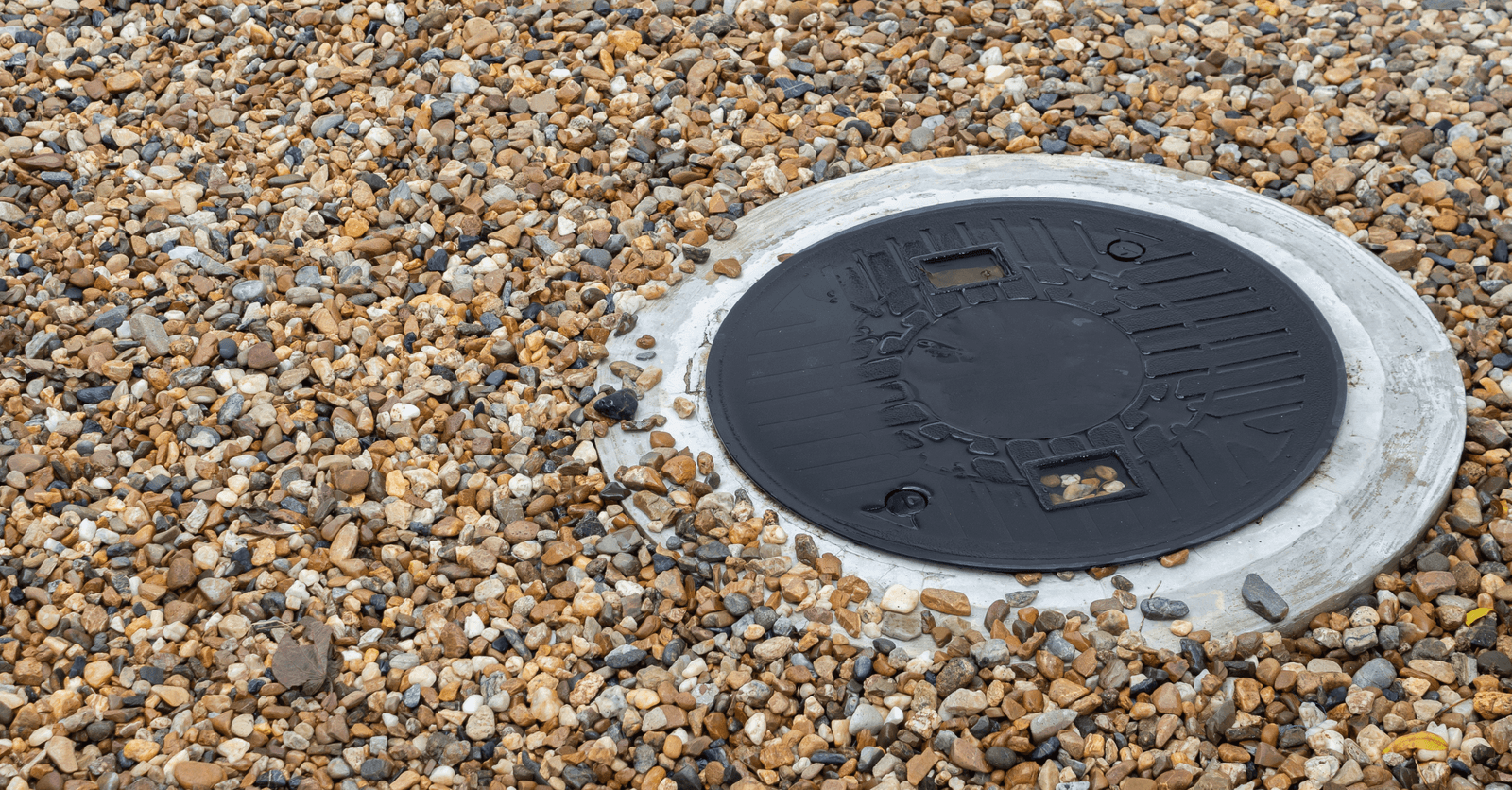
Source: Canva
Rare it is not for blockages to occur in kitchen sink drain pipes or toilet sewer lines. It's a common occurrence, even in buildings connected to municipal sewers. However, the problem proves to be more complex when the blockage in question forms in a septic system. Not only are you then forced to figure out where is the blockage exactly, but you also have to fix the problem straight away.
Signs of a Clogged Septic Tank
A clogged septic tank will show different warning signs that can't be overlooked. The faster you can get to the bottom of the issue, the faster you can take the necessary steps to remedy the problem. The longer you wait, the worse the problem will get, this is a fact.
A clogged septic tank will negatively affect your pipe network before you know it, yet there are a lot more signs to watch out for. Here are a few.
Slow draining water
This is often the first telltale sign. Not only is water backing up in the shower, sink, or bathtub, but toilets are slow to drain. One might think they’re clogged, but even a plunger can’t completely clear the blockage.
Foul smell in home or backyard
Odours surrounding the perimeter of a septic tank can spread throughout a house via the kitchen and bathroom sink, bathtub, and showers.
Gurgling sound coming from the plumbing
Any sort of bubbling or gargling noise from the pipes may be a warning sign that the septic tank is full and needs to be emptied, or otherwise, it’s clogged.
Wastewater backup in home
Act fast. This is the worst possible symptom of a defective septic system.
Stagnant water or damp areas near the septic tank
Indicators: The lawn is greener atop the septic tank, the ground is spongy, always damp or water tends to pool around it.
The Different Possible Causes of a Blockage
Several factors can be at the root of the issue, on top of elements hindering the proper water flow inside the pipes.
A buildup of sludge in the chamber or inside the pipe
Foreign objects (small bathtub toy, for example) slipped through the mesh screen
Material defect (a crushed pipe or stuck check valve)
Septic tank system design or sizing issue
The blockage is in the toilet instead of the pipes or septic tank. Beware of what you throw out!
Local wastewater treatment systems rely on the presence of living organisms (enzymes, bacteria), to help break down waste. To work effectively, one has to ensure the system’s fragile balance goes undisturbed. Without the contributions of said living organisms, the waste can’t be broken down and turned into liquid, resulting in a build-up of sludge, which ends up obstructing the system and dominoes into the above-mentioned symptoms.
The aforementioned balance will be compromised in the following scenarios:
The number of dwellers exceeds the septic tank’s capacity
Prolonged idle period (extended absence of occupants or rarely used second home)
Repetitive use of chemical products (detergents, bleach, acid, caustic soda, etc.) or antibiotics, oils, or grease, which will eliminate living organisms
Leave a certain amount of sludge in the septic tank to ensure the system’s proper functioning. However, the quantity of which should never exceed 50% of the tank.
Proceed with regular verifications using a long stick, inserting it into the tank until it reaches the sludge content. Doing so will allow you to determine whether sludge fills half of the tank’s chamber. If so, pump out the waste before any problems occur.
Note that the contents of a septic tank emit a toxic gas that’s hazardous to mankind, so be sure to leave to lid open for 15 minutes prior to the inspection to allow the toxic gases to dissipate. Open all inspection chamber lids (access ports), and wear gloves and a protective mask.
Who should you call when your septic tank is clogged?
Naturally, one must call a service company specializing in remediation maintenance; a team of professionals who can carry out an accurate diagnostic and identify with precision where the blockage is located in the system. If need be, the expert will use a camera to probe the pipelines and figure out where the blockage or draining issue stems from. Using specially designed equipment, one can even spot a pipe that’s susceptible to crushing, which is most often impossible to see with the naked eye.
A specialist can:
Pump the waste
Clean the tank and pipelines with a hydraulic pressure washer
Clean the effluent filter
Replace a clogged pumice filtration system if need be
Inspect the check valves and the different inlet and outlet pipes
Replace specific parts to fix a problem
Never climb into a septic tank, even if it’s empty. The risks of doing so are too health-hazardous given the gasses and bacteriological contamination. Never attempt to clean or empty it yourself.
How to Find the Blockage in a Septic System
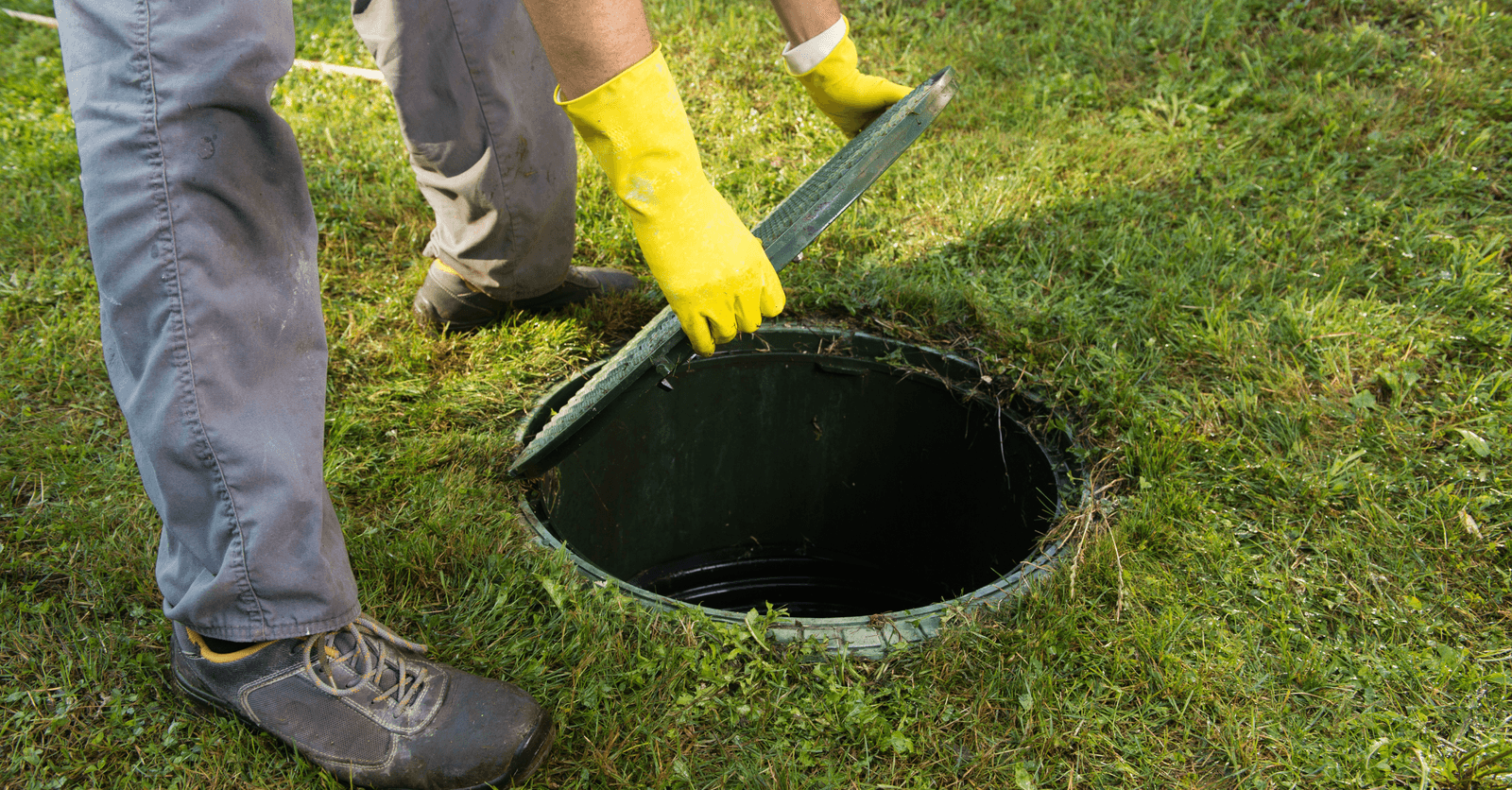
Source: Canva
Before hiring a service company, here’s how you can check if the issue with your septic tank is truly a blockage. Get yourself some gloves and a mask, open up the access ports and grease traps, and then wait about 15 minutes, allowing the toxic gasses to dissipate prior to peering inside.
Manage the sludge levels using a probe. If the scum starts spilling over or the sludge fills over 50% of the tank, empty it without further delay. If this isn’t the case, check the drainage system to spot where the problem might lie.
Follow the guidelines listed below.
Make sure the siphons are clean and empty.
Check the subsurface disposal field or sand filter; the outlets might be the source of the issue.
Open all taps, one after the other, and flush all toilets.
Follow the water flow via the different septic tank access ports, from the one closest to the property to the one furthest away (from the grease trap, tank, effluent filter, and the liquids draining toward the treatment tank).
If the water is hindered in one section, this is indicative that the problem stems from the section before.
If wastewater is hindered before the first access ports, this means that the blockage is in the house’s pipeline system. Open the water taps and flush the toilets to figure out which outlet is causing the problem. Unclog the obstructed pipeline or call in a plumber.
If the issue is with the grease trap, the septic tank should be emptied and cleaned.
How to Unclog a Septic Tank’s Drainage Line
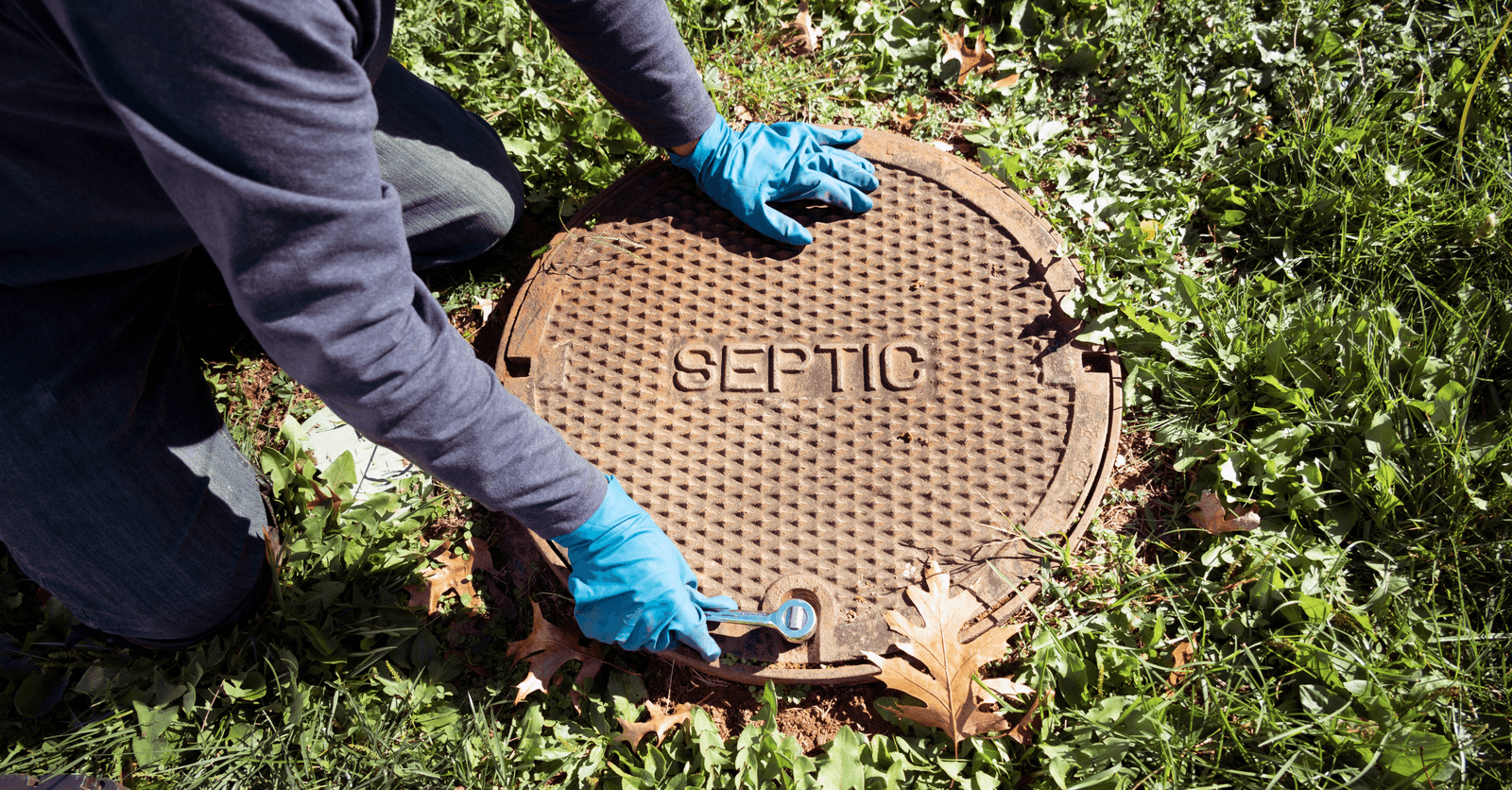
Source: Canva
After investigating, you determined that the blockage is obstructing the septic tank’s drainage line. Naturally, you can hire a professional; however, you may be able to fix the problem yourself.
Doing so requires no professional tools of any kind. You will simply need the following equipment:
Mask to shield you from gas intoxication
Thick gloves
Bucket to dump the sludge and obstructions
Trash bag for waste
Garden hose
Here’s how to proceed based on where the issue lies.
With the lift station
Should the problem be with the lift station, the simplest solution consists of replacing the defective part. However, be sure to call in a professional if needed to ensure an effective repair.
Grease trap is full
Once the grease trap reaches maximum capacity, the septic tank is at risk of clogging. Regular maintenance not only means pumping out the waste but also cleaning it every six months. Make sure that you dispose of the waste in the right garbage to avoid any other issues.
Effluent screen is clogged
The effluent screen plays a key part in recuperating foreign objects channelled through the septic tank’s pipeline. Regularly hand washing said device is essential to ensure its proper functioning.
Effluent filter is obstructed
If the effluent filter’s outlet is clogged, clean the pumice filter and replace it if it’s damaged. This will ensure the wastewater is flowing properly.
Inlet pipe is clogged
Oftentimes, when the inlet baffle is clogged, the best way to unclog it is using a garden hose or pressure washer, but it depends on the type of obstruction.
Outlet pipe is clogged
If the outlet baffle is obstructed, you will most likely need to unclog it by hand to remove the hindrance.
Tank’s downstream wastewater treatment system is obstructed
If you determine that the wastewater treatment system located downstream from the tank is clogged, we highly recommend calling in a professional remediation worker to fix the issue the right way.
Septic tank is full
Once the septic tank has reached full capacity—over half the tank is filled with sludge—have your tank emptied immediately to prevent its content from spilling over or system obstructions.
How to Dislodge a Blockage
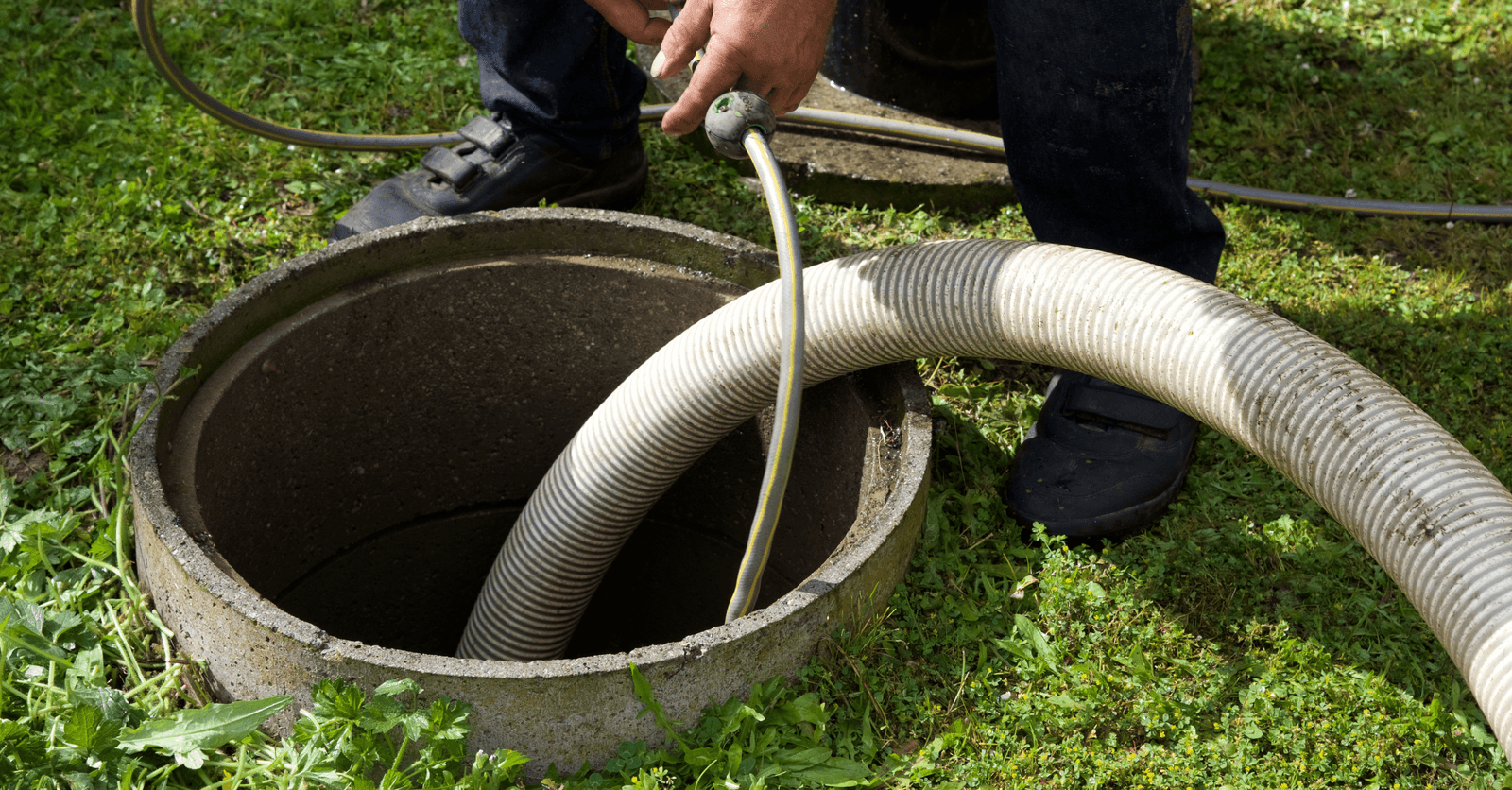
Source: Canva
In the section below, we listed the different ways to go about dislodging a blockage using common, everyday tools.
Use a Plunger
The plunger is the first option to consider and will allow you to dislodge certain types of obstructions. Simply position the plunger against the clogged pipe’s opening in such a way that the tool is completely covering the pipe’s opening. It’s advised to cover other openings, such as sink or bath drains. Apply pressure repeatedly by way of back-and-forth motions.
Use a Garden Hose
Insert a garden hose into the septic tank’s drain pipe. Push it in as far as possible so that the hose is inserted into the back, blocking the inside. Open the valve so that water flows in freely.
Move the garden hose carefully in all directions to shoot water all around the drainage pipe to dislodge the blockage.
Use Pipe Unclogging Nozzles
If the blockage persists, secure unclogging nozzles to the garden hose to spray water in all directions. Doing so will allow you to amp up the water pressure and most likely dislodge the pipeline soon after.
Use a Sewer Rod
Said tool is in the shape metal spring, fitted with a hook at one end. It allows you to scrape and break apart blockages. At the opposite end, there’s a lever that allows the sewer rod to move inside the drainage pipeline and maneuver the hook.
What product can you use to dislodge an obstruction in a septic system?
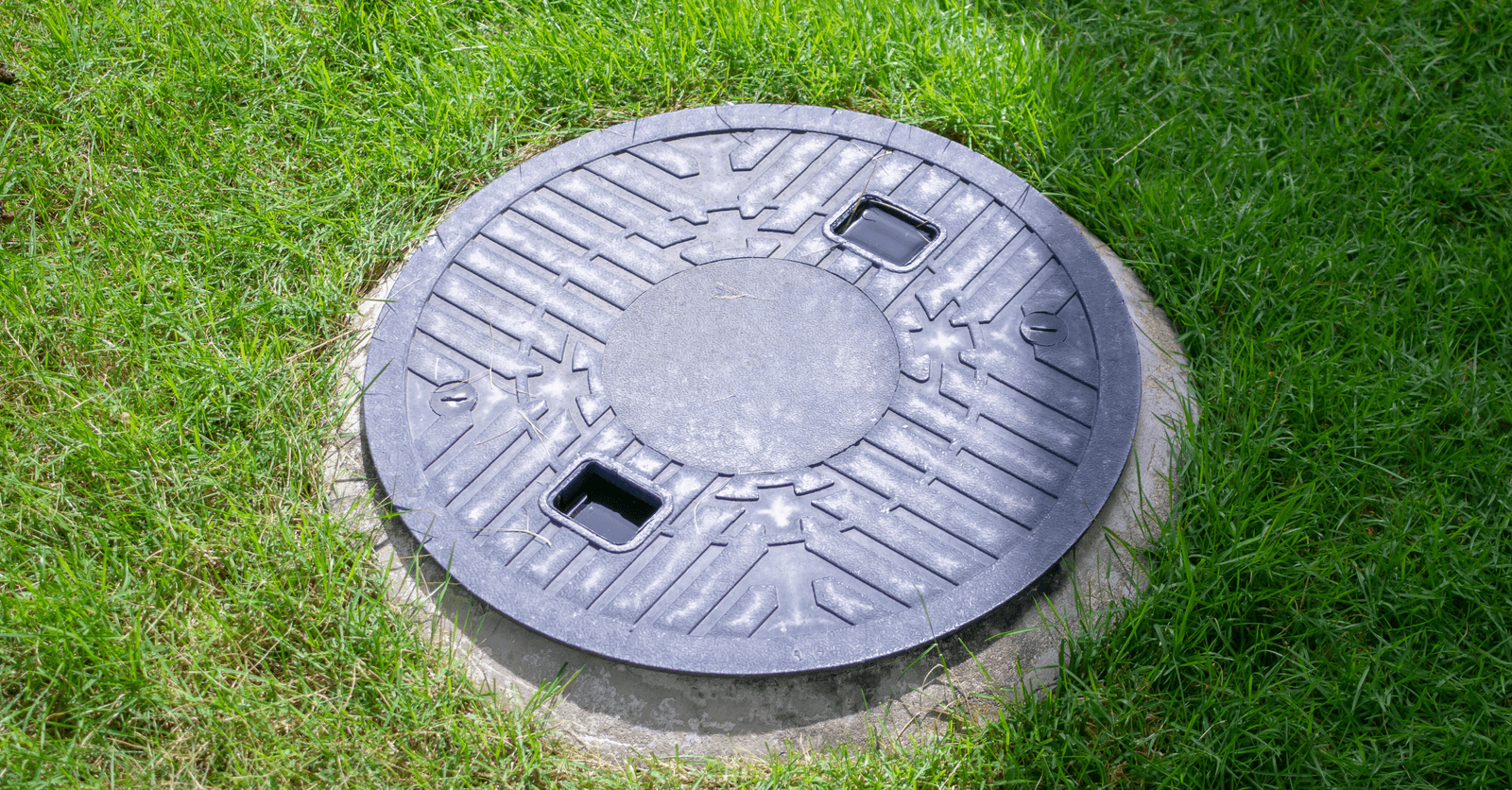
Source: Canva
You can also resolve a clogging issue in a septic system by using certain products. Before buying one product or another, give the following a try.
In a large container, mix 85 ml (⅓ cup) of baking soda with 85 ml (⅓ cup) of vinegar.
Immediately pour the mixture down the drain. A bubbling will ensue.
Allow the liquid to act for two to three hours, and then pour hot water down the drain.
This solution can be used inside by pouring the mixture into the toilet tank. Allow the solution to work for a few hours or, if possible, overnight. You’re more likely to have positive results if the blockage isn’t too far down the drain pipe. Flush the toilet. If the water drains easily, the operation is a success.
Purposefully made products are also retailed. Some are specifically made for toilets and, as such, are safe to use for septic tanks, designed to fix clogging issues. Such products are known as organic activators and can achieve the desired results by reinstating the biological balance needed to remediate wastewater.
As such, long-lasting septic tank activators are equivalent to six months of peace of mind. Some products require three steps, spread out over eight days. Others are sold as fast-acting emergency kits. However, beware of so-called "magical" products that are supposedly designed to prevent you from having to empty your septic tank every two years.
Before purchasing whichever product is advertised, check with a septic system specialist.
Note that studies have shown that adding bacteria or enzymes will not have any measurable benefits on your septic tank’s proper functioning. However, such products may be worth it if your septic tank’s natural microbial level is destabilized after undesirable matters are introduced.
Other Tips to Dissolve Blockages
Hot water can dissolve blockages made up of grease or soap deposits quickly. To ensure this method’s efficiency, the boiling water poured down the drain must come into contact with the blockage.
Remove stagnant water from the sink, and pour boiling water two to three times down the drain, allowing the liquid a few minutes to take action in between every pour. Doing so will allow the hot water to act efficiently.
Others swear by the yogurt trick. Apparently, allowing yogurt that has perished at room temperature (or in the sunlight) to ferment can get the job done—just dump it into the toilet and repeat the process weekly.
Hire a Remediation Professional
Note that unclogging an entire wastewater treatment system must be carried out by a remediation professional. However, depending on where the blockage is found, a plumber may also be able to successfully unclog a drain pipe using, for example, a sewer rod.
Get 3 quotes to fix your clogged your septic tank
RenoQuotes.com can help you get quotes from a general contractor. By submitting your project, we’ll put you in contact with top-rated contractors. Fill in the form on the homepage (it only takes a few minutes) and get estimates from trusted professionals.
Dial 1-844 828-1588 to speak with one of our customer service representatives.
Looking for something else?
Related articles
The latest industry news, interviews, technologies, and resources.

Christine Simard
•25 Jul 2025
Often confused with demolition, stripping aims to accomplish much more than razing everything in its path. While its process is indeed comparable, the fact remains that it is first and foremost synonymous with renewal and not destruction.

Editorial Team
•26 Feb 2024
An outdoor shed offers durability and extra storage to a property. Your shed affords a place to store outdoor items, garden tools, garbage bins, lawnmowers, bicycles as well as camping gear.

Editorial Team
•07 Nov 2023
It shouldn’t be a surprise that environmental awareness is trending. On the homefront, many are looking for ways to reduce energy use and increase efficiency. Not only this, but others are interested in alternative ways of living, investing in homes off the beaten path such as tiny homes, trailers, and houseboats.

Editorial Team
•07 Nov 2023
Natural light is an essential element for creating a healthy and pleasant living environment. Of course, windows do their part to allow this light to enter our interiors.

Editorial Team
•02 Jun 2025
Taking on a home renovation is never easy. From the get-go, we’re only thinking about the result. Just picture that beautiful new tile floor, those gorgeous new windows or a full-on kitchen remodel, complete with green-friendly appliances.